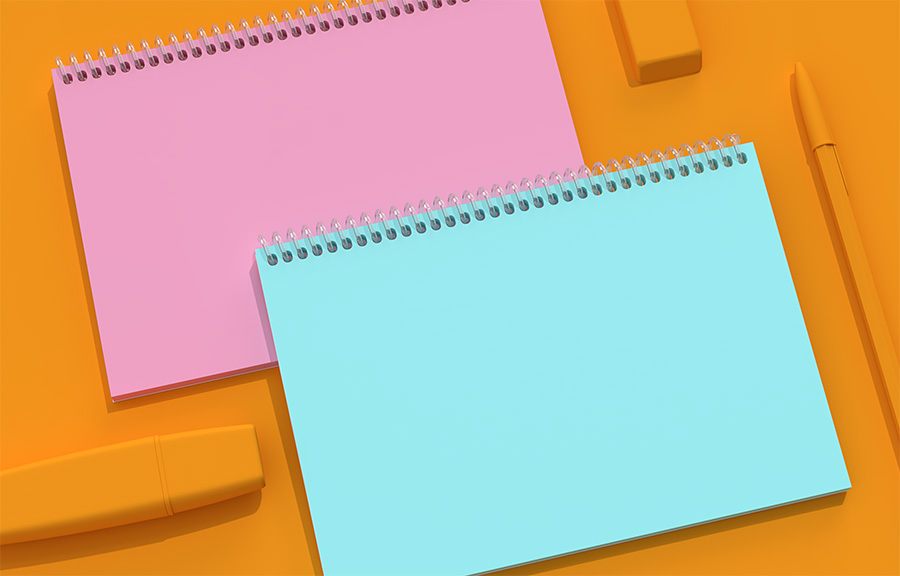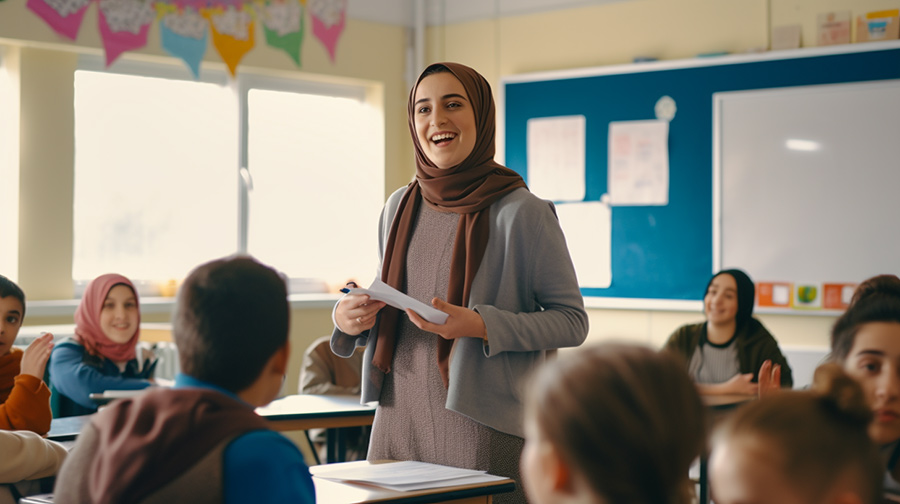Harnessing the potential of revision flashcards can significantly boost your memory capabilities. These compact yet potent tools have been the cornerstone of effective study strategies for years. By incorporating visual cues, concise information, and systematic review, flashcards can transform your revision sessions from mundane to dynamic. Whether you’re a visual learner drawn to colorful diagrams or a textual learner who thrives on bullet points, flashcards cater to all. Dive into these tried-and-true methods and unlock the full potential of your study sessions.

Benefits of Flashcards
Flashcards have long been heralded as a quintessential tool for effective learning and revision. Their simplicity belies their potency, offering a myriad of benefits that cater to diverse learning needs. From harnessing the power of active recall to providing a tangible sense of progress, flashcards are more than just cards with information. They are strategic instruments that transform the way students engage with, internalise, and recall information. Let’s delve into the multifaceted advantages of using flashcards in the learning process.
- Active Recall: Flashcards encourage students to actively retrieve information from memory, which strengthens neural connections and enhances long-term retention.
- Spaced Repetition: When used systematically, flashcards can be employed in a spaced repetition manner, reviewing information at increasing intervals, a technique proven to solidify memory.
- Flexibility: Flashcards can be tailored to fit any subject or topic, from languages and sciences to history and math.
- Portability: Their compact nature allows students to carry them around and review on-the-go, be it during commutes, waiting times, or short breaks.
- Engagement: The interactive nature of flashcards can make revision more engaging and less monotonous.
- Self-assessment: Revision flashcards allow students to quickly gauge their strengths and weaknesses, focusing more on areas that need improvement.
- Visual Learning: For visual learners, revision flashcards can incorporate diagrams, colors, and images, making complex information more digestible.
- Versatility: They can be used individually, in pairs, or in group settings, facilitating both self-study and collaborative learning.
- Cost-Effective: Flashcards are inexpensive to produce. Even digital flashcard apps are often free or available at a minimal cost.
- Customisation: Students can create their own revision flashcards, ensuring the content is relevant to their specific needs and learning style.
- Enhanced Focus: By breaking down information into bite-sized chunks, flashcards allow for concentrated study sessions, reducing the likelihood of cognitive overload.
- Tangible Progress: Physically moving through a stack of revision flashcards provides a sense of accomplishment and a clear indicator of progress.
In the vast landscape of educational tools, revision flashcards stand out for their timeless efficacy and adaptability. They encapsulate the essence of learning by promoting active engagement, adaptability, and self-assessment. As we’ve explored, their benefits extend beyond mere rote memorisation, fostering deeper comprehension, and long-term retention. Embracing flashcards in one’s study regimen is not just a choice; it’s a strategic move towards academic excellence.

Incorporating Flashcards into Lessons: A Guide
Flashcards, with their versatility and engaging nature, can be seamlessly integrated into lessons to enhance learning outcomes. Here’s how educators can effectively use them:
- Introduction of New Concepts: Begin the lesson by showing flashcards with key terms or images. This visual introduction can pique students’ interest and provide a foundation for the topic at hand.
- Active Participation: Ask students to create their own flashcards based on the lesson’s content. This encourages them to distill information into concise points, promoting understanding and retention.
- Group Activities: Divide students into teams and use flashcards for games like “Charades” or “Pictionary”. For instance, a student can pick a card and act out or draw the concept for their team to guess.
- Review and Reinforcement: At the end of a lesson or unit, use flashcards to review key concepts. This can be done through a quiz format, where the teacher shows the term or image and students provide the definition or explanation.
- Peer Teaching: Pair students and have them quiz each other using flashcards. This not only reinforces the material but also fosters collaborative learning.
- Differentiated Instruction: Flashcards can be tailored to cater to different learning levels. For advanced learners, cards can have more complex concepts, while foundational cards can be used for those needing reinforcement on basic ideas.
- Spaced Repetition: Encourage students to review the flashcards at increasing intervals over time, a technique proven to enhance long-term retention.
- Interactive Boards: If using digital tools, flashcards can be incorporated into interactive whiteboards or platforms like Quizlet, allowing for multimedia integration and interactive quizzes.
- Homework and Self-study: Assign students to create flashcards as homework based on the lesson’s content. This not only reinforces what was taught but also prepares them for the next lesson.
- Feedback Loop: After students create their own flashcards, have a session where they exchange cards, providing feedback on clarity, accuracy, and completeness. This peer review process can deepen understanding.
In essence, when thoughtfully integrated into lessons, flashcards transcend their simple design to become powerful educational instruments. Their dynamic nature caters to various learning styles, be it visual, auditory, or kinesthetic. By prompting students to engage with the material actively, flashcards cultivate a deeper connection to the content, moving beyond rote memorisation to genuine comprehension. Their interactive nature not only fosters a sense of curiosity and exploration but also promotes a collaborative learning environment.
When students pair up or work in groups with flashcards, they benefit from diverse perspectives, enhancing their grasp on the subject. Moreover, the tangible nature of flashcards offers immediate feedback, allowing students to track their progress and adjust their study strategies accordingly. The repetitive and hands-on interaction with flashcards reinforces neural pathways, ensuring that key concepts are not just learned but truly internalised. Thus, when leveraged effectively, flashcards can transform the educational landscape, making learning an interactive, participatory, and fruitful endeavor.
Supporting the use of flashcards for revision
Revision flashcards might appear as mere threads. However, when woven into the fabric of learning with intention and strategy, they can significantly enhance the richness and depth of the educational experience. As educators and students navigate the ever-evolving realm of learning, the humble flashcard stands as a testament to the power of simplicity, adaptability, and consistency in effective revision.
Images: Teachers should encourage students to harness the power of visual memory by illustrating their revision flashcards. Since the human brain is naturally adept at recalling images over text, pairing key terms with relevant sketches or symbols can be beneficial.
Diversified Flashcards: For complex topics, teachers might suggest students create varied flashcards. One type could focus on direct recall with single-word prompts, while another could delve into comprehension with descriptive cues.
Structured Learning: Instead of clustering information, guiding students to break down topics ensures they understand each element individually. This method prevents the ‘list effect’ where students might recall items in sequence rather than in isolation.
Accessibility: Emphasising the importance of keeping flashcards accessible is key. Recommending durable, coil-bound cards ensures students have their revision tools on hand, ready for any opportunity to review.
Simplicity: Teachers should stress the importance of brevity. Revision Flashcards should be concise, capturing the essence of the topic. If students struggle with a concept, guiding them to create detailed notes separate from their flashcards for deeper dives can be beneficial.
Mnemonics: Recognising that mnemonic devices aren’t universally effective, introducing them as an optional strategy is wise. For those who find mnemonics beneficial, providing classic examples, like “Richard Of York Gave Battle In Vain” for the rainbow colours, and encouraging students to create their own can be advantageous.
Colour Coding: Introducing students to the psychology of colours in memory retention is essential. For instance, sharing studies that highlight the effectiveness of blue ink over black for better recall can be enlightening. Demonstrating how to categorise information using different colours, underlining significant points in vibrant hues, and emphasizing the use of coloured pencils or inks for annotations can further enhance this technique.
By integrating these techniques into classroom instruction, teachers equip students with the skills and strategies they need to make the most of their revision flashcards, fostering independent and effective learners.
Revision Flashcards in Education
The educational landscape is dotted with myriad tools and techniques, but few have stood the test of time as effectively as revision flashcards. These unassuming tools, when wielded correctly, can be the linchpin of successful learning strategies. They offer a multifaceted approach to revision, catering to diverse learning styles, from the visual enthusiast to the textual analyst. The benefits they offer, such as active recall and spaced repetition, are backed by cognitive science, underscoring their efficacy. Furthermore, their adaptability to various subjects and topics makes them a universal tool, suitable for learners across different age groups and academic levels.
Teachers, as the guiding force in the classroom, play a pivotal role in maximising the potential of flashcards. By introducing students to the nuances of effective flashcard use, from color coding to structured learning, educators can amplify the benefits manifold. Moreover, by integrating flashcards into lessons, teachers can foster a more interactive and engaging learning environment. This not only enhances comprehension but also promotes collaborative learning, peer feedback, and self-assessment.
Unlock Academic Excellence: Discover the Power of Custom Revision Flashcards Now!
We offer a wide range of customisations to support teachers, from multiple sizes, bespoke covers, coloured pages and more